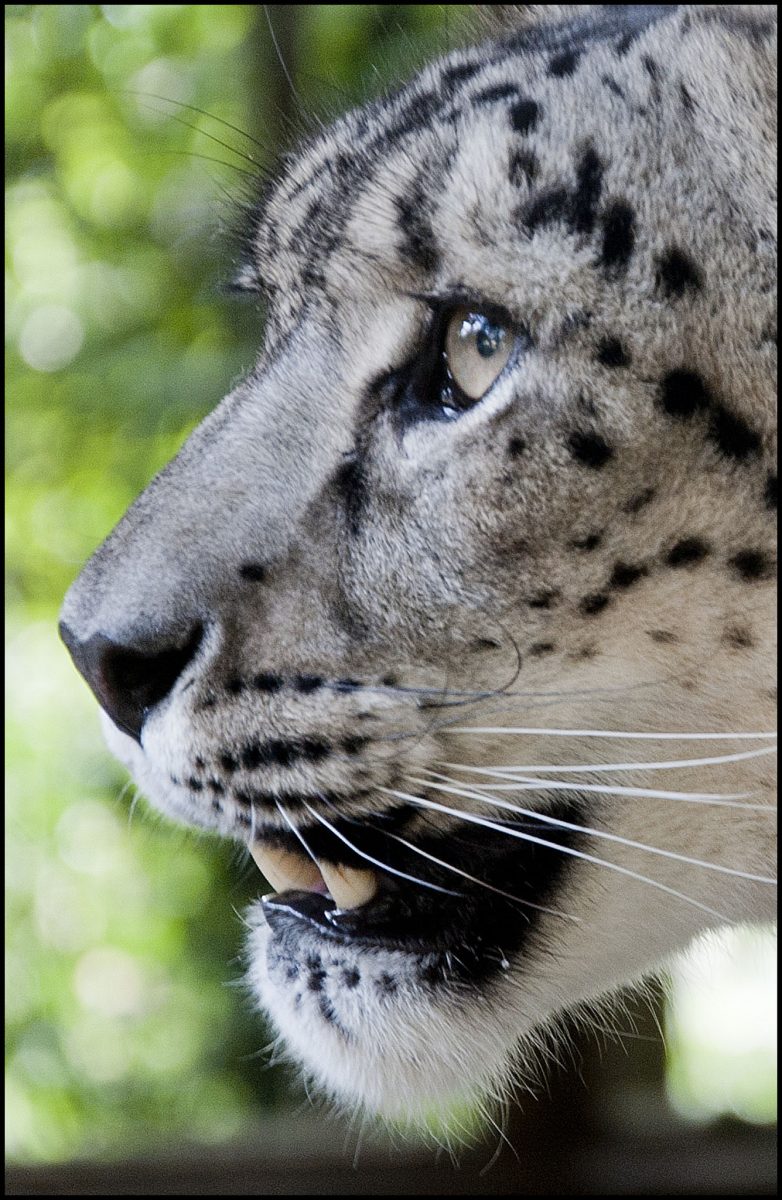Factfile
Where they live
Central Asia, in Afghanistan, Bhutan, India, Kazahkstan, Mongolia, Nepal, Pakistan, Russia, Tajikistan and Uzbekistan
Habitat
Remote scree slopes and forests between altitudes of 1,800-5,500m
Size
length: 120-150 cm, tail: 70-100 cm; height: 60 cm
Weight
25-75kg
Lifespan
Threats
Hunted for their highly prized fur, killed for their bones for use in traditional Oriental medicines and squeezed out of their remote habitat by the rapid growth in human population, snow leopards face an uncertain future.
Did you know...
- Unlike other big cats, the snow leopard cannot roar vocalisations include hisses, mews, growls, and wailing
- They crouch to feed, a feature normally associated with small cats
More about snow leopards...
The snow leopard is a moderately large cat species native to the mountain ranges of Central Asia. They live between 3,000 and 5,500 metres above sea level on rocky mountain slopes.
Snow leopards show several adaptations for living in a cold mountainous environment.
Their bodies are stocky, their fur is thick, their ears are small and rounded, all of which help to prevent excess heat loss.
Their paws are wide and this helps distribute their weight when walking on snow. The feet also have fur on their soles to increase their grip on steep and unstable surfaces. It also helps to minimise heat loss.
Snow leopards’ tails are long and flexible, helping them to maintain their balance in the rocky terrain they inhabit.
Their tails are also very thick furred which allows them to be used like a blanket to protect their faces when asleep.
The snow leopard has a short muzzle and domed forehead, containing unusually large nasal cavities that help the animal breathe the thin, cold air of their mountainous environment.
Snow leopards are solitary animals. They maintain a territory, however they do not defend this aggressively when other snow leopards enter. They are most active at dusk and dawn.
They hunt a range of prey including blue sheep, ibex, marmots, hares and large birds.
The breeding season is short because of the harshness of its environment.
After a gestation period of 90-100 days the female gives birth to 1-5 cubs. They are born with full black spots which turn into the characteristic rosette pattern as they grow.
How you can help...
Adopt a Snow Leopard!
Help prevent animals from becoming extinct by adopting an animal, you'll be supporting our zoo too!
Gold Adoption
Help support our zoo with a Gold adoption package with an additional zoo admission ticket, and personalised message displayed outside your adopted animalʼs enclosure.
£55.00
Find out moreSilver Adoption
Help support our zoo with a Silver adoption package it includes an adoption certificate, a zoo admission ticket and lots of zoo treats!
£41.50
Find out more











